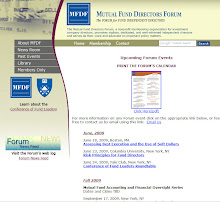On November 12, 2008, Secretary of the Treasury Henry Paulson, Jr. provided an update on the state of the financial system, the U.S. economy, and the Treasury's strategy for the ongoing implementation of the Emergency Economic Stabilization Act of 2008 (EESA). Paulson warned that, though systematic economic crisis had been averted, the U.S. and global economies are still fragile.
policymakers on a course to resolve the systemic risk created by the
inherent conflict in the GSE structure."
Secretary Paulson also discussed the recent efforts to implement the financial rescue package, the Treasury's Capital Purchase Program plan to buy up to $250 billion in preferred stock in federally regulated banks and thrifts, and outlined priorities for the use of the remaining funds from the Troubled Asset Relief Program (TARP).
As I assess where we are today, I believe we have taken the necessary steps to prevent a broad systemic event. Both at home and around the world we have already seen signs of improvement. Our system is stronger and more stable than just a few weeks ago. Although this is a major accomplishment, we have many challenges ahead of us. Our financial system remains fragile in the face of an economic downturn here and abroad, and financial institutions' balance sheets still hold significant illiquid assets. Market turmoil will not abate until the biggest part of the housing correction is behind us. Our primary focus must be recovery and repair.Paulson outlined the state of housing and mortgage finance, and some of the actions the Treasury has taken to prevent foreclosures and keep mortgage financing available. These steps include working with industry and HUD to refinance a large number of struggling borrowers into affordable mortgages, as well as shoring up Fannie Mae and Freddie Mac, with the objective of, "minimizing the near term costs to the taxpayer and by setting
policymakers on a course to resolve the systemic risk created by the
inherent conflict in the GSE structure."
Secretary Paulson also discussed the recent efforts to implement the financial rescue package, the Treasury's Capital Purchase Program plan to buy up to $250 billion in preferred stock in federally regulated banks and thrifts, and outlined priorities for the use of the remaining funds from the Troubled Asset Relief Program (TARP).
Paulson also discussed the Treasury's further strategies to aid the economy. Secretary Paulson said the Treasury's strategic priorities will continue to be:
- First, we must continue to reinforce the stability of the financial system, so that banks and other institutions critical to the provision of credit are able to support economic recovery and growth. Although the financial system has stabilized, both banks and non-banks may well need more capital given their troubled asset holdings, projections for continued high rates of foreclosures and stagnant U.S. and world economic conditions.
- Second, the important markets for securitizing credit outside of the banking system also need support. Approximately 40 percent of U.S. consumer credit is provided through securitization of credit card receivables, auto loans and student loans and similar products. This market, which is vital for lending and growth, has for all practical purposes ground to a halt. Addressing these two priorities will have powerful impacts on the overall financial system, the strength of our financial institutions and the availability of consumer credit.
- Third, we continue to explore ways to reduce the risk of foreclosure.
- designing further strategies for building capital in financial institutions;
- supporting consumer access to credit outside the banking system; and
- mitigating mortgage foreclosures.





